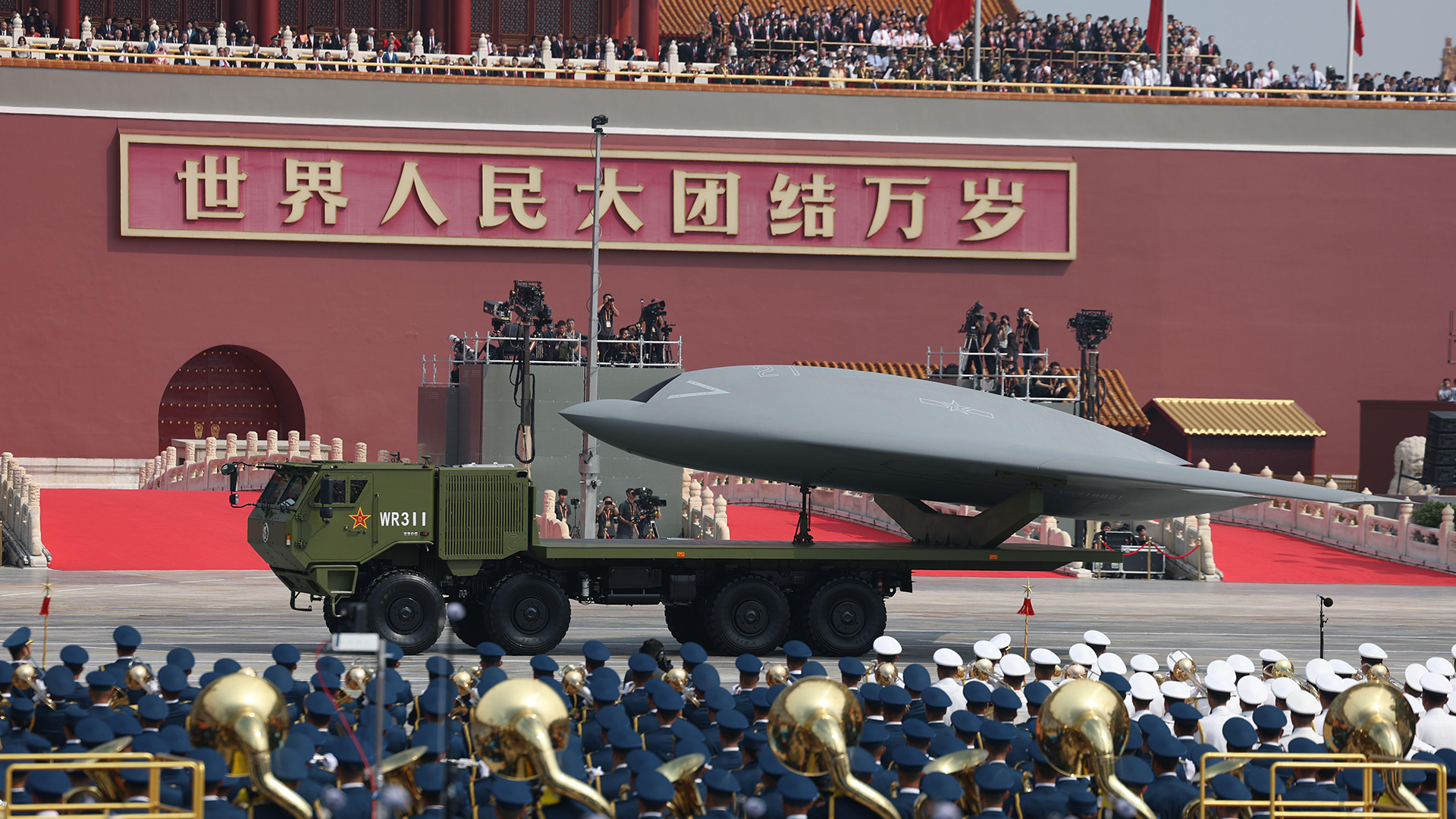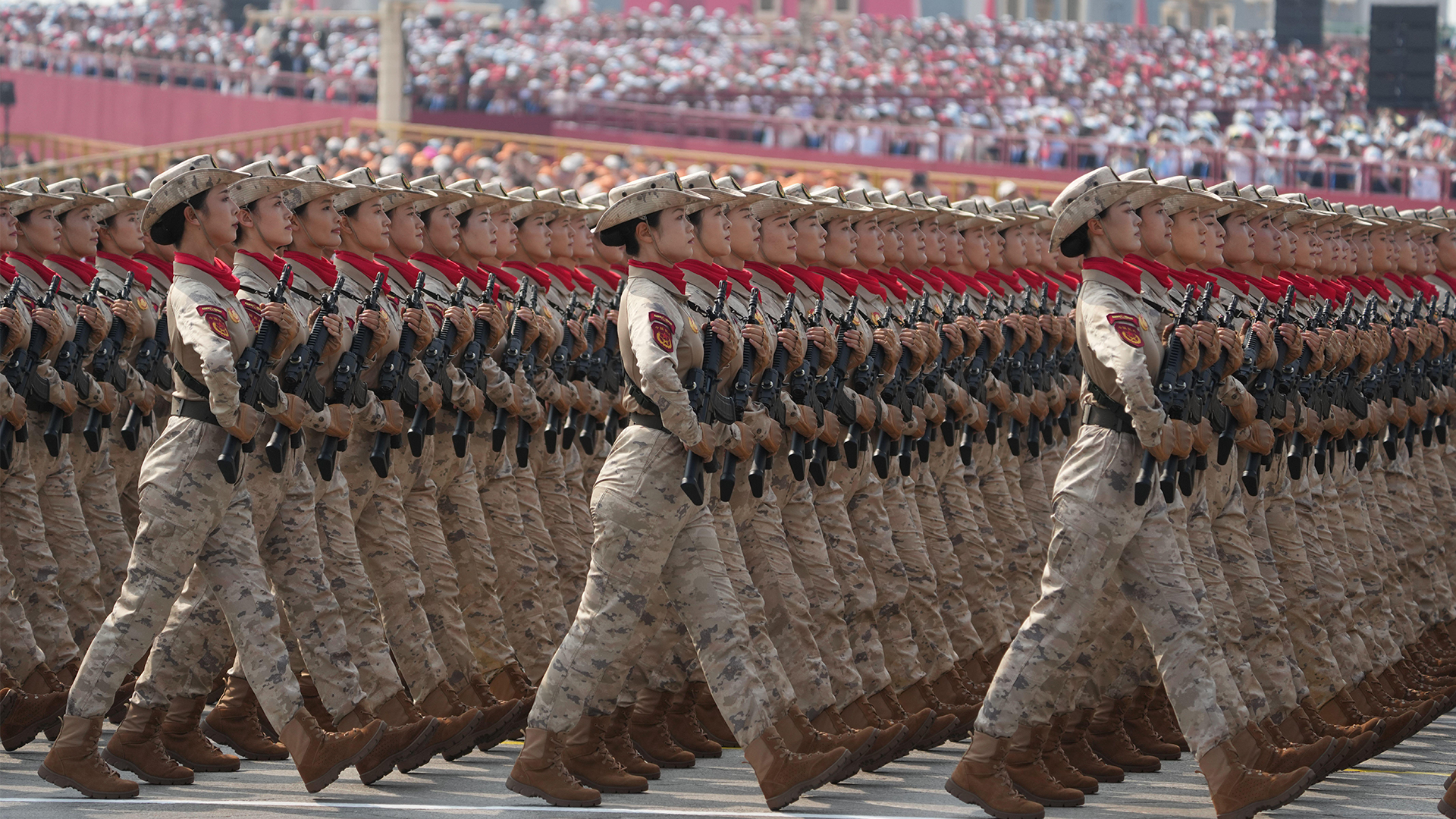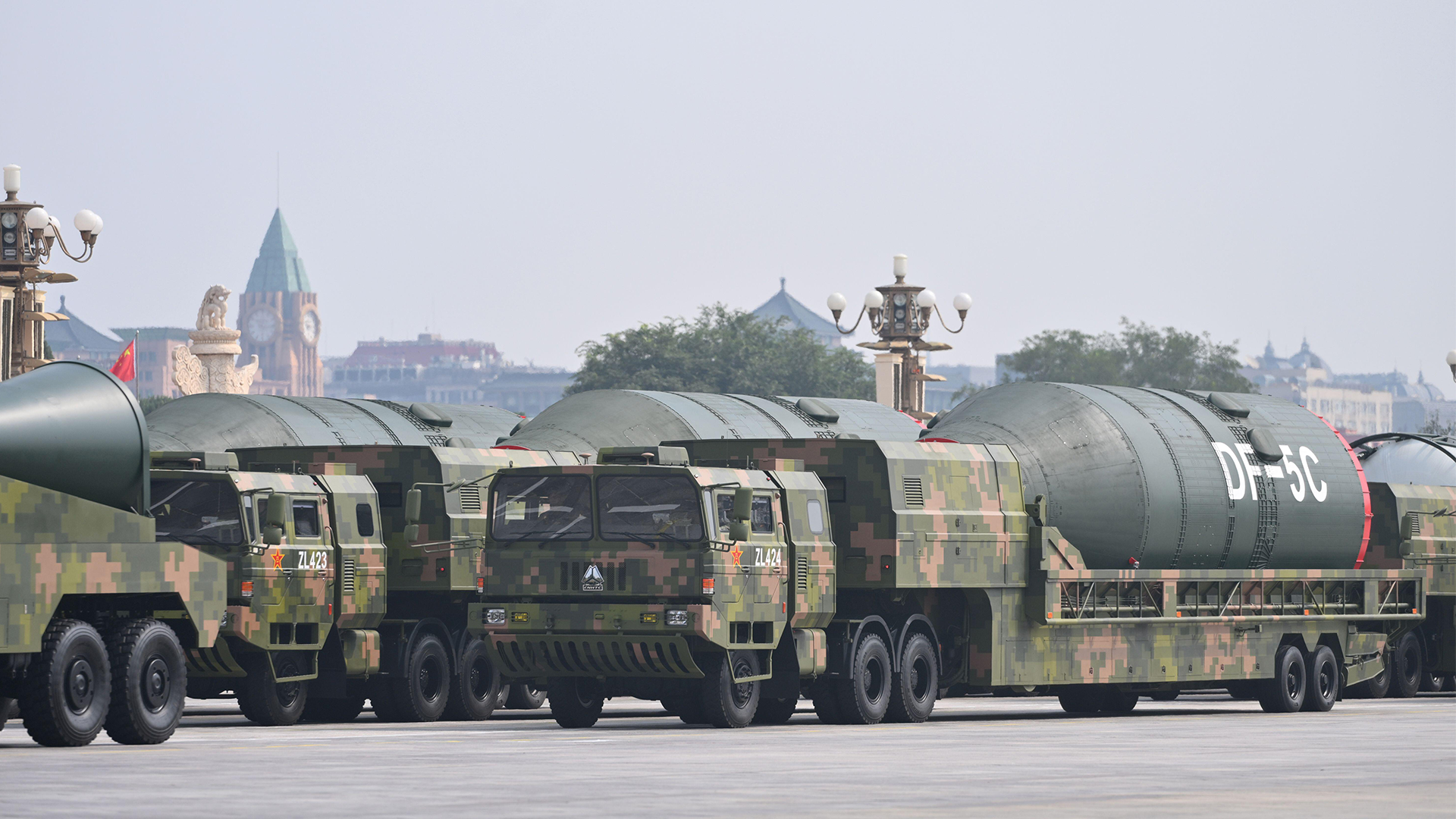
Nuclear missiles, robot dogs and laser weapons on display at Chinese military parade

China has staged its biggest military parade to date in Beijing, using the 80th anniversary of Japan's surrender in 1945 to showcase new military technologies across land, sea, air and space.
Surrounded by a wealth of advanced weaponry and flanked by Russian president Vladimir Putin and North Korean leader Kim Jong Un, Chinese president Xi Jinping declared the world faced a choice between "peace and war".
From intercontinental ballistic missiles to underwater drones, BFBS Forces News takes a look at the haul on display – and what it tells us about Beijing's military might.
Nuclear triad on public display for the first time
For the first time ever, Beijing presented all three legs of its nuclear triad in one parade.
Three intercontinental ballistic missiles, or ICBMs, were on display: the DF-61, DF-31BJ and DF-5C.
State media claimed the DF-5C has a range exceeding 20,000km and could carry up to 12 warheads, theoretically placing the entire globe within strike range.
The JL-1 and JL-3 nuclear-capable missiles, normally carried by strategic bombers, also made their first public appearance.
These systems can potentially close the gap with US and Russian strategic capabilities.

Hypersonic missiles designed to strike carriers
The most prominent new system was the YJ-21, dubbed the "carrier killer".
The missile can reach supersonic speeds and is thought to have a range of more than 600 km, designed specifically to threaten large naval vessels such as aircraft carriers.
China also showcased the YJ-15, YJ-17, YJ-19 and YJ-20 hypersonic missiles, all part of the "Ying Ji" family, which can be launched from ships or aircraft.

Robots and drones expand the battlefield
Beyond strategic missiles, Beijing showcased its investment in unmanned warfare, giving it the capability to operate both underwater and in arctic terrain autonomously.
The parade displayed two types of extra-large uncrewed underwater vehicles.
The AJX002 underwater drone, estimated to be 60ft long, is designed for stealthy undersea operations and the XLUUV.
Its crane-assisted design and torpedo-shaped hull of the AJX002 suggest long-duration patrols.
Meanwhile, reports suggest China now operates the largest XLUUV programme in the world, with at least five distinct models under development.
Robot dogs, capable of walking on ice were included in the parade, but they did not march for themselves, instead being mounted on vehicles.
Lasers and anti-drone systems
The parade also marked the appearance of LY-1 laser weapons that can effectively damage the optical sensors of the enemy.
High-power microwave systems and missile guns were also displayed.
Together, they represented a comprehensive demonstration of China's anti-drone technology.
Space defence systems
China also showcased the HQ-29, described as a space-defence system capable of targeting satellites in low-Earth orbit.
While details remain scarce, the large interceptor has drawn comparisons to the US Navy's SM-3 Block IIA, which can be launched from both ships and land.
The inclusion of anti-satellite systems signals that China is preparing to contest space as a warfighting domain.









